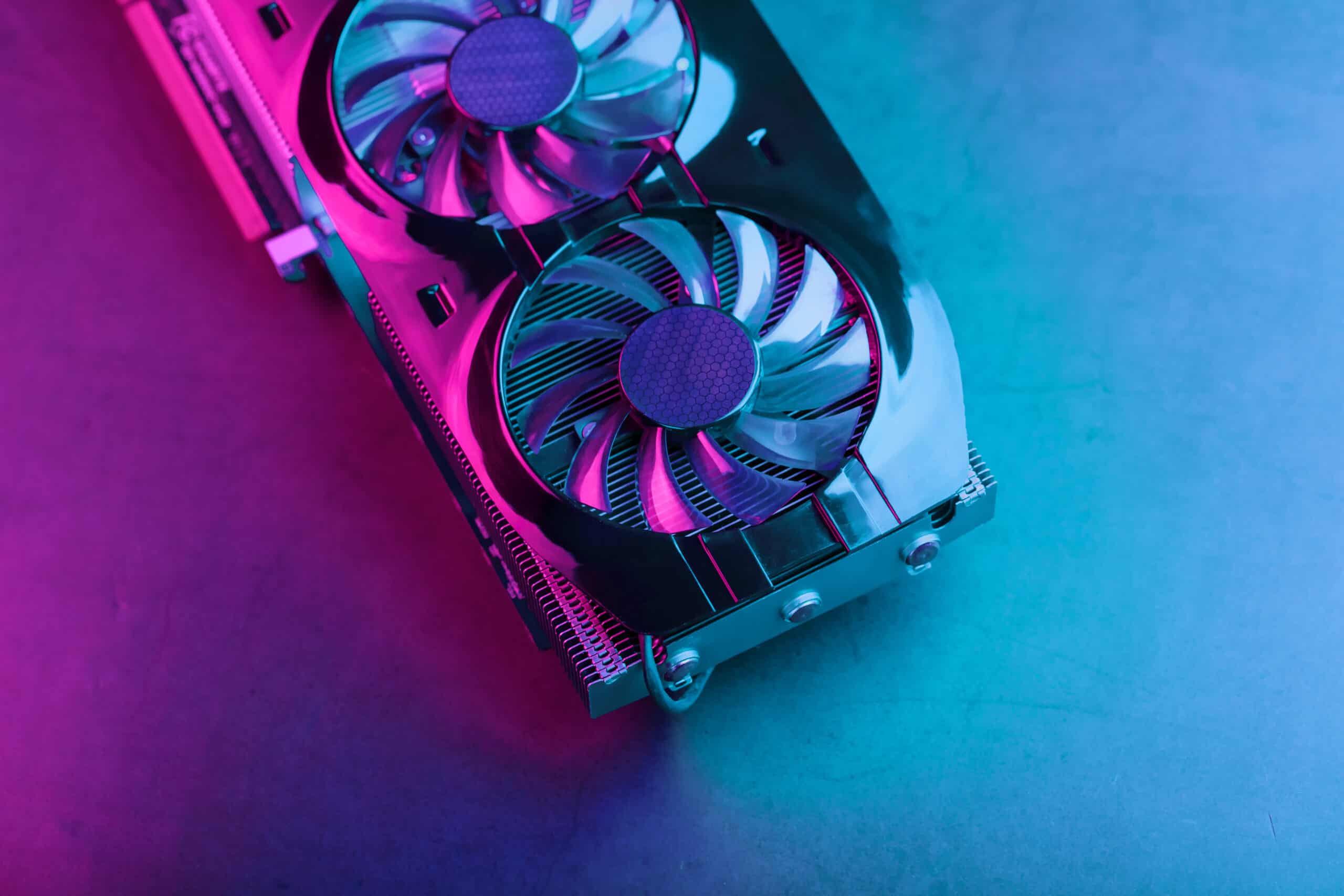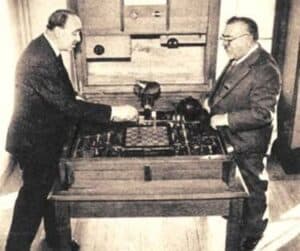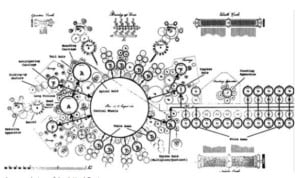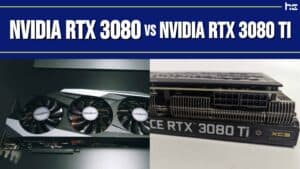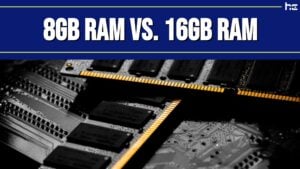Over the past 30 years, Peripheral Component Interconnect (PCI) technology has extended computer hardware capabilities supporting massive advances in computer graphics, storage, and memory.
If you’re looking to build, customize, or upgrade a PC, you are certain to encounter PCI, or the more recent PCIe slots. Understanding what PCI technology is and the differences between PCI and PCIe can help you select the right computer expansion bus for your PC.
In this article, we break down PCI and PCIe with their 4 key differences to give you the full comparison of this industry-standard technologies.
What is PCI?
The Peripheral Component Interconnect standard, known as PCI, is a high-speed bus developed by Intel for connecting a range of devices to the motherboard of a computer. PCI is present in almost every desktop computer and is designed to facilitate quick and easy connection of expansion cards and other hardware components.
The PCI bus is available in two formats:
- A planar device, which is an integrated circuit (IC) that is attached to the motherboard
- An expansion card that is inserted into a dedicated slot
A PCI bus is comparable to a processor bus but works independently and in parallel to it, with connected components assigned addresses in the processor’s address registry.
PCI delivers industry-standard, high-speed connectivity with slots delivering plug-and-play expansion cards that include:
- Network cards
- Graphics cards
- Audio cards
- Small Computer System Interface (SCSI) cards
- TV cards
- Video capture cards
- Radio controller cards
The cards are available in 32-bit and 64-bit versions and have either 33MHz or 66MHz speed, with a throughput of 133 Mbps. PCI has a high degree of standardization and inter-compatibility with the technology, automatically configuring the cards to operate alongside other PCI devices in the area.
A Brief Timeline of PCI Technology
- 1990: Intel Architecture Labs begins work on PCI technology by defining architecture and developing a chipset and platform, with an almost immediate release.
- 1994: PCI market penetration is increased with installation in 2nd-gen Pentium PCs.
- 1995: PCI adoption increased with PC broadening manufacturers adopting the technology. Apple adopts PCI for its Power Macintosh computers and later its Performa computers in 1996. The 64-bit PCI version was predominantly used in servers.
- 1996 to 2000: PCI was further revised with additional performance enhancements and features that included adaptation to other form factors and frequencies.
- 2004: The Peripheral Component Interconnect Special Interest Group (PCI-SIG) introduced PCI Express, the latest standard which has largely superseded PCI since 2013.
What is PCIe?
PCIe, or Peripheral Component Interconnect Express, is the upgraded version of PCI, released in 2004. This next-stage version of PCI is built on the original technology but has been enhanced to meet the requirements of modern computing.
PCIe is now the standard interface for connecting non-core computer components like graphics, memory, and storage cards, to a PC’s motherboard. The “Express” was added to the name of the latest version of PCI to distinguish it from the original version and emphasize its speed and efficient performance. The modern PCIe bus transfers data at twice the rate of the original PCI.
PCIe slots are routinely installed in PCs, providing a quick and easy connection point for a range of compatible peripheral components, formatted as PCIe cards or expansion cards. PCIe is backward compatible with PCI, though older cards work at a slower speed. On most PCs, you can use a PCIe slot to connect:
- Graphics cards
- SSDs
- HDDs
- CPUs
- Wireless networking modules
History and Development of PCIe Technology
PCI Express was developed by the Arapaho Work Group (AWG), consisting of Intel engineers and later industry partners in the PCI SIG. They released the first version of the standard in 2003.
During the early development of the PCIe standard, it had the working title of “High-Speed Interconnect.” This was then changed to “3rd Generation I/O” (3GIO) and, subsequently, PCI Express.
Over the past 18 years, PCIe has been extensively revised to ensure that the technology keeps up with computing advances.
Here are the main revisions:
- 1.0, released in 2003 with a transfer rate of 64.0 Giga transfers per second (GT/s)
- 2.0, released in 2007 with a transfer rate of 5.0 GT/s
- 3.0, released in 2010 with a transfer rate of 8.0 GT/s
- 4.0, released in 2017 with a transfer rate of 16.0 GT/s
- 5.0, released in 2019 with a transfer rate of 32.0 GT/s
- 6.0, released in 2022 with a transfer rate of 64.0 GT/s
- 7.0, slated for release in 2025 with a transfer rate of 128.0 GT/s
PCIe is now available in several form factors suitable for a wide range of computing devices:
- Standard (full-length, half-length, and low profile/slim)
- Mini PCI Express
- PCI Express M.2
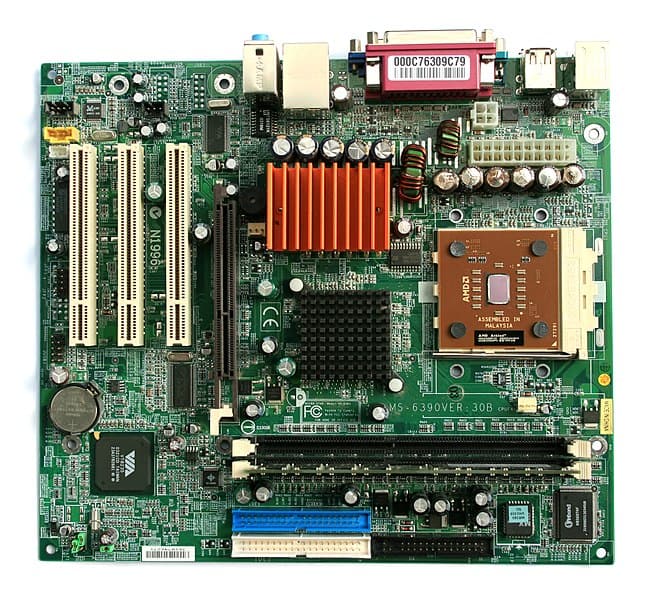
©I, Jonathan Zander / CC BY-SA 3.0 – License
What’s the Difference Between PCI and PCIe?
PCI and its successor, PCI Express, have several differences which determine their performance and suitability for computing. Below are the 4 important differences between the two computer bus standards.
1. PCI is a parallel interface, and PCIe is a serial interface.
The PCI computer bus is a parallel interface where multiple bits of data are transferred simultaneously across several individual channels. PCI is a serial interface where bits of data are transmitted as a series of pulses over buses that are shared by multiple connected devices.
2. PCI slots are a single uniform size.
PCI slots are a single standard size with a fixed number of lanes that accepts a standard-sized card across all devices. PCI Express has a wide range of form factors and slot lengths, depending on the devices and cards used.
3. PCI Express is significantly faster than PCI.
Speed is the main performance advantage of the PCIe standard. It offers a massive uplift in speed and frequency compared to the legacy PCI standard. PCI achieves speeds of up to 64 GB/s for PCIe 3.0, while the original PCI is capped at 133 MB/s.
4. PCIe has more efficient error detection and reporting.
PCIe has more sophisticated baseline error detection and handling to enhance performance. The base specification of this standard outlines key errors that PCIe slots should routinely check for. Connected compatible devices also have registers to record detected errors.
PCI vs. PCIe: Side-by-Side Comparison
| PCI | PCIe | |
|---|---|---|
| Longform Name | Peripheral Component Interconnect | Peripheral Component Interconnect Express |
| What is it? | A local computer bus standard | A high-speed serial computer expansion bus standard |
| Primary Use | Provision of a standardized interface for connecting peripheral hardware to the motherboard of a PC | A high-speed interface for connecting peripheral hardware to the motherboard of a PC |
| Initial Release | 1990 | 2004 |
| Influential Developers | Architecture Labs, Intel Corporation | Arapaho Work Group (AWG), Intel, PCI SIG |
| Number of Versions | 6 (most recent: 3.0) | 7 (most recent: 7.0) |
Similarities and Differences
Similarities
- PCI and PCIe are both standards for the connection of peripheral components to a motherboard.
- PCI and PCIe are both types of bus for transferring data between the motherboard and the attached peripheral component.
- Both PCI and PCIe consist of printed circuit boards with integrated circuits.
- PCI Express and PCI are available in slot format for the connection of memory, storage, networking, and graphics cards to a computer motherboard.
- Both standards were developed by Intel.
- The PCIe and PCI standards are both overseen and revised by the PCI SIG.
Differences
- PCI was first released in 1990, while PCIe was released in 2004.
- A PCI Express slot offers faster connectivity speeds than a PCI slot.
- PCIe slots and cards come in a variety of form factors, whereas the original PCI slot is only available in a single format.
- PCIe is backward compatible with PCI.
- PCI has had 6 regions while PCIe is in its seventh revision/version.
- PCIe had two alternate names while it was being developed, “High-Speed Interconnect” and “3rd Generation I/O” (3GIO).
What is PCIe Used for?
PCIe has the capabilities to support a wide range of applications spanning consumer, server, and industrial computing. PCI has been ubiquitous in PCs, laptops, desktops, and servers since 2012. The physical slot is versatile and can just as easily serve as a passive backplane interconnect as an interface for motherboard-level connection of the host system processor with integrated and add-on peripherals.
PCI Express is now the default interface for graphics cards, with new graphics technologies like NVIDIA’s Scalable Link Interface (SLI) technology, using PCIe to support multiple graphics cards running in tandem for maximized performance.
Does a PCI Slot or Card Need to be Upgraded?
PCI is a legacy technology and won’t be further updated or integrated into new devices, so updating an original PCI slot with a new PCIe slot would be beneficial. PCI cards and slots are significantly slower than their PCIe counterparts.
Even though there is backward compatibility between the new and legacy versions of PCI, the original PCI will not be able to support contemporary graphics, memory, or networking technologies that rely on the faster speed and performance of PCIe.
If your computer has a PCI slot, likely, other hardware components are also outdated, so the benefit of upgrading the slot may not make a significant difference to performance. If undertaking a PC build or looking for a new or refurbished PC, PCIe slots should be provided as standard.
PCI vs. PCIe: 6 Must-Know Facts
- PCI stands for Peripheral Component Interconnect.
- PCIe stands for Peripheral Component Interconnect Express.
- PCIe cards have been doubling their data transfer rates since PCI 3.0 (2010).
- TV tuner cards can be connected to a computer via a PCIe slot.
- A PCI card and slot can be used to provide additional I/O capacity to a PC.
- The Intel Architecture Labs (IAL), where PCI was developed, was the R&D department of Intel throughout the 1990s. It was disbanded in 2001 after all the contributors left Intel.
Final Thoughts
PCI technology massively expanded the utility and capabilities of computers in the 1990s. It has continued to support accelerations and advances in computing as the PCIe standard.
PCI Express is now the standard interface for connecting peripheral components to a motherboard and PCIe cards or slots of version 3.0 at a minimum should be expected in contemporary computers.
The image featured at the top of this post is ©Aleksandr Grechanyuk/Shutterstock.com.
